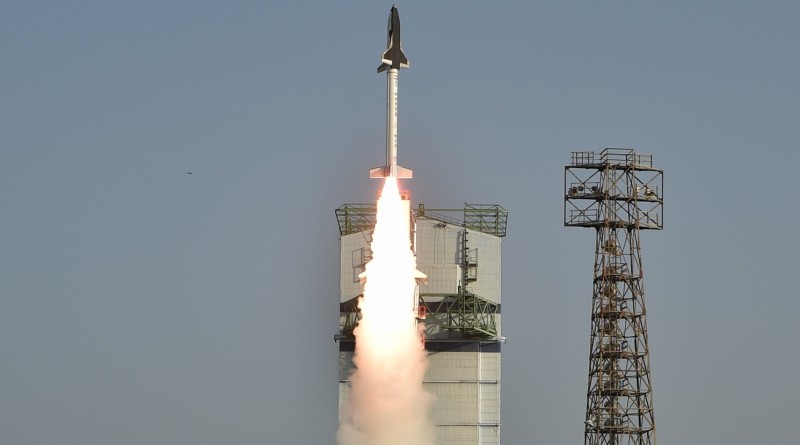India’s Reusable Launch Vehicle Testbed soars to Success in first High-Speed Flight
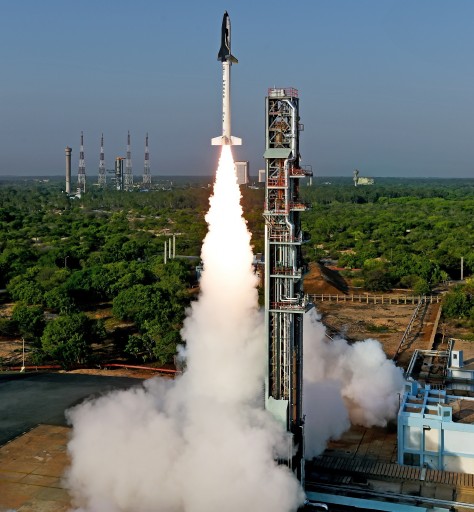
India’s first winged space plane took to the skies Monday morning in the country’s inaugural test of reusable launch vehicle technology, marking the first step in a long development process aiming for a fully reusable two-stage rocket flying some time in the next 15 years.
Monday’s high-speed test flight used a small winged craft launched to high altitude and high velocity ahead of a re-entry and guided flight test. Launched atop a solid-fueled rocket, the Reusable Launch Vehicle-Technology Demonstrator (RLV-TD) successfully executed its exercises in the hypersonic flight regime ahead of re-entry and a simulated approach to a runway in the Indian Ocean.
Although the test was followed with great interest across India, the Indian Space Research Organization kept a low profile for the mission and information only came from various media outlets in the run-up to the launch. No live coverage was available and the outcome of the test was only confirmed after the fact through a press release.
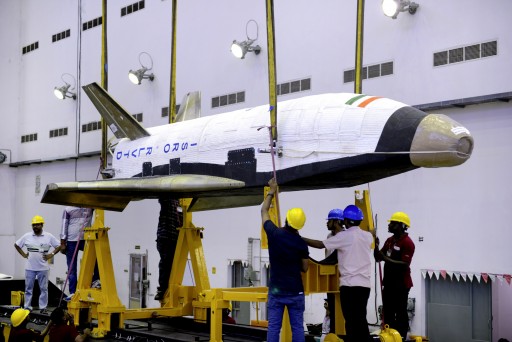
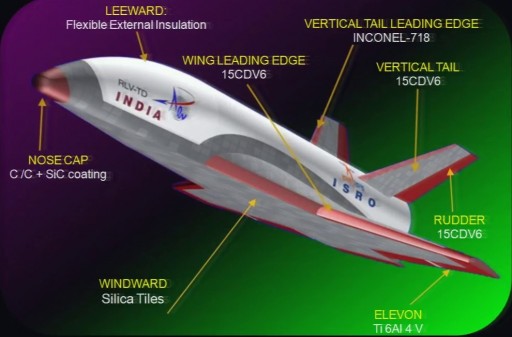
The RLV-TD project aims to develop a number of technologies including powered cruise flight, hypersonic flight control, autonomous landing and air-breathing propulsion. The overall goal of the program is to validate technologies needed to realize a fully re-usable Two-Stage-To-Orbit Launch Vehicle combining rocket and scram-jet technology.
The RLV-TD is not a prototype but rather a scaled down testbed in use for the first steps in India’s exploration of novel launch vehicle technology. The craft – about 6.5 meters long with a fuselage diameter of one meter – closely resembles a mini Space Shuttle like the American re-usable X-37B in operation by the Air Force.
RLV-TD has a mass of around 1,750 Kilograms and features a delta-wing design with a pair of angled tail fins. Around 600 Thermal Protection Tiles are affixed to the underside of the space plane and its nose features a carbon-carbon cap to withstand temperatures of 1,200°C occurring at re-entry.
RLV-TD lifted off from the First Launch Pad at the Satish Dhawan Space Center at 1:30 UTC on Monday, blazing into the morning sky atop an H9 Solid Rocket Motor. Launching with 9,200 Kilograms of propellant, H9 delivered an average thrust of 32,500 Kilogram-force over the course of a burn of 91.1 seconds. Having accelerated the vehicle to a speed of Mach 6, the H9 booster separated at an altitude of 56 Kilometers while RLV-TD coasted up towards a peak altitude of 65 Kilometers.
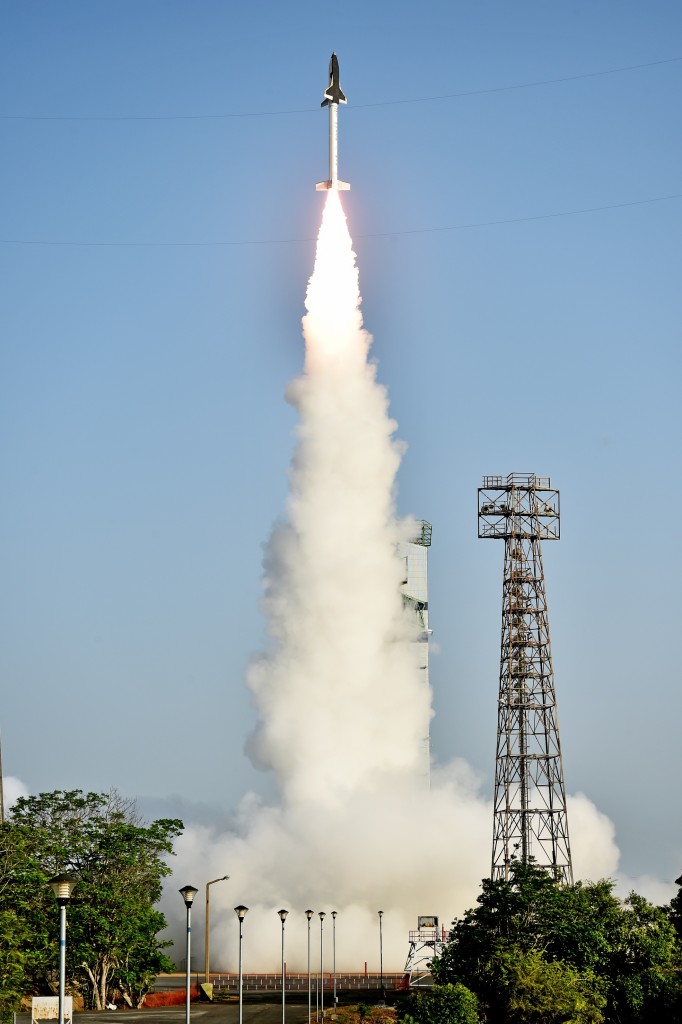
Passing the apogee of its sub-orbital arc, RLV-TD began the critical descent phase filled with a number of flight test objectives. RLV-TD was outfitted with a variety of sensors including load cells, temperature and pressure sensors to gather a complete picture of the vehicle’s aero-thermal characteristics in the hypersonic regime followed by guidance exercises during atmospheric flight.
Because no recovery of the craft was planned, all data had to be downlinked in real time, making use of an S-Band patch antenna installed on the vehicle.
Tracking and data collection was completed by a ground station at the launch site and a mobile terminal deployed to the ocean beneath the vehicle’s flight path.
Having passed the high-point of its trajectory, RLV-TD activated its Motion Control System and elevons to begin setting up for re-entry by raising the angle of attack.
During re-entry, a number of measurements were made at different depths in the Thermal Protection tiles to assess the performance of the tiles and the carbon-carbon nose cap and wing-leading edges. When passing 40 Kilometers in altitude, RLV-TD was to begin its guided flight segment, pitching down and entering a series of landing maneuver demonstrations beginning in an area of increased dynamic pressure and continuing for around two and a half minutes while the vehicle slowed from Mach 3.
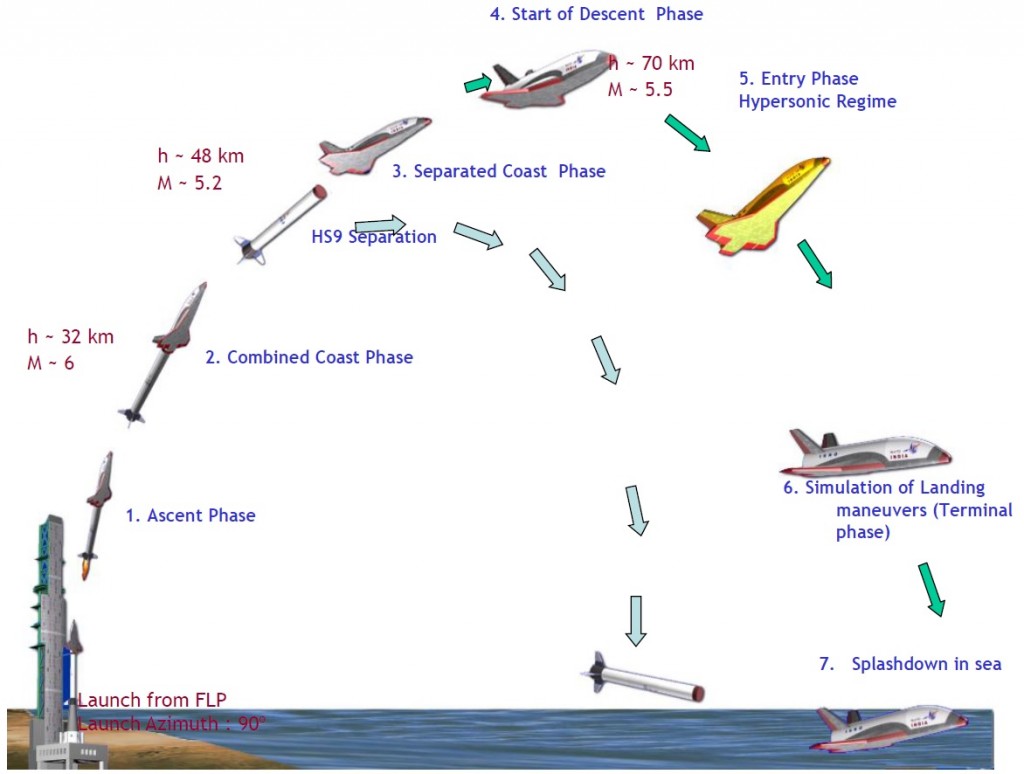
Flush Air Data Sensors embedded in the vehicle’s nose were to be used to assist in navigation and control during atmospheric flight starting at Mach 2.5. Employing its rudder and elevons, RLV-TD aimed for a pre-determined point in the Bay of Bengal to demonstrate it could accurately maneuver to a landing strip – an objective of future missions.
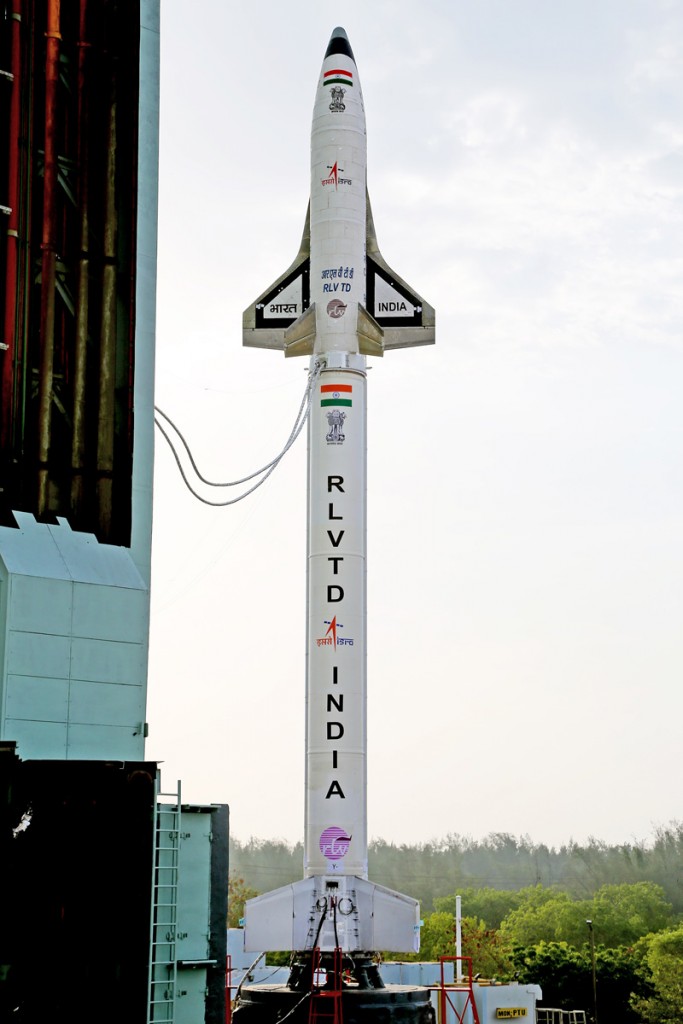
According to ISRO, the vehicle successfully completed is planned maneuvers and made a normal glide towards the planned location in the ocean, around 450 Kilometers due east of the launch site. The flight had a total duration of 12 minutes and 50 seconds from liftoff to impact.
“In this flight, critical technologies such as autonomous navigation, guidance & control, reusable thermal protection system and re-entry mission management have been successfully validated,” ISRO said in its press release.
Monday’s test, known as HEX – Hypersonic Flight Experiment – is only the first in a program of at least four tests to deliver the data needed for the development of the Two-Stage-To-Orbit Vehicle. In another test, the Reusable Launch Vehicle-Technology Demonstrator (RLV-TD) will be dropped from an aircraft and complete a demonstration of an autonomous runway landing. This will be followed by a Return Flight Experiment combining the first two test missions by launching the vehicle to high speed and then having it maneuver back to a runway landing. The fourth test of the program will incorporate a scramjet engine to accelerate the RLV-TD to hypersonic speeds followed by a return to a landing strip.
ISRO engineers characterized Monday’s experiment as the first ‘baby step’ towards an operational reusable launch vehicle that is likely 10 to 15 years away. The operational version of the vehicle would be at least five times the size of the RLV-TD testbed and feature a combination of air-breathing propulsion and conventional rockets – enabling the first stage to complete a fly-back to a runway and the second stage to return from orbit after the completion of its mission.
Aiming for low cost, reliable and on-demand space access, India’s future re-usable launch vehicle could cut costs for space launches by a factor of ten, ISRO hopes.

